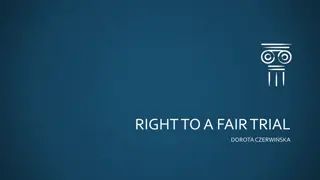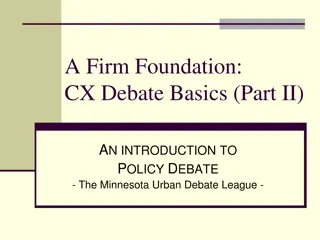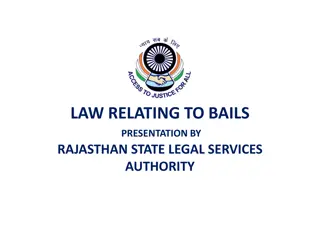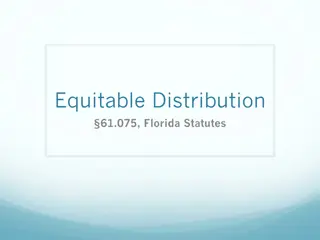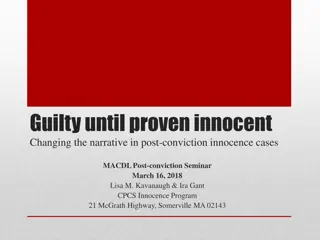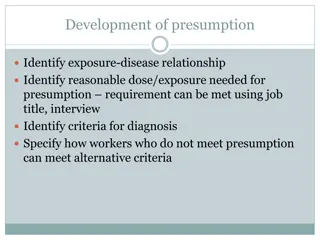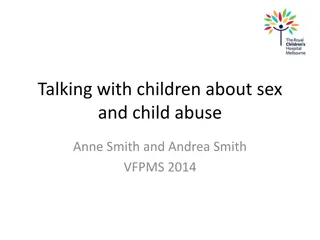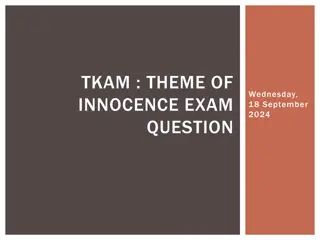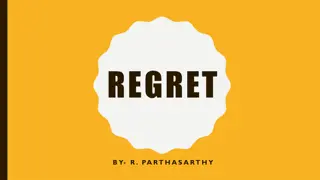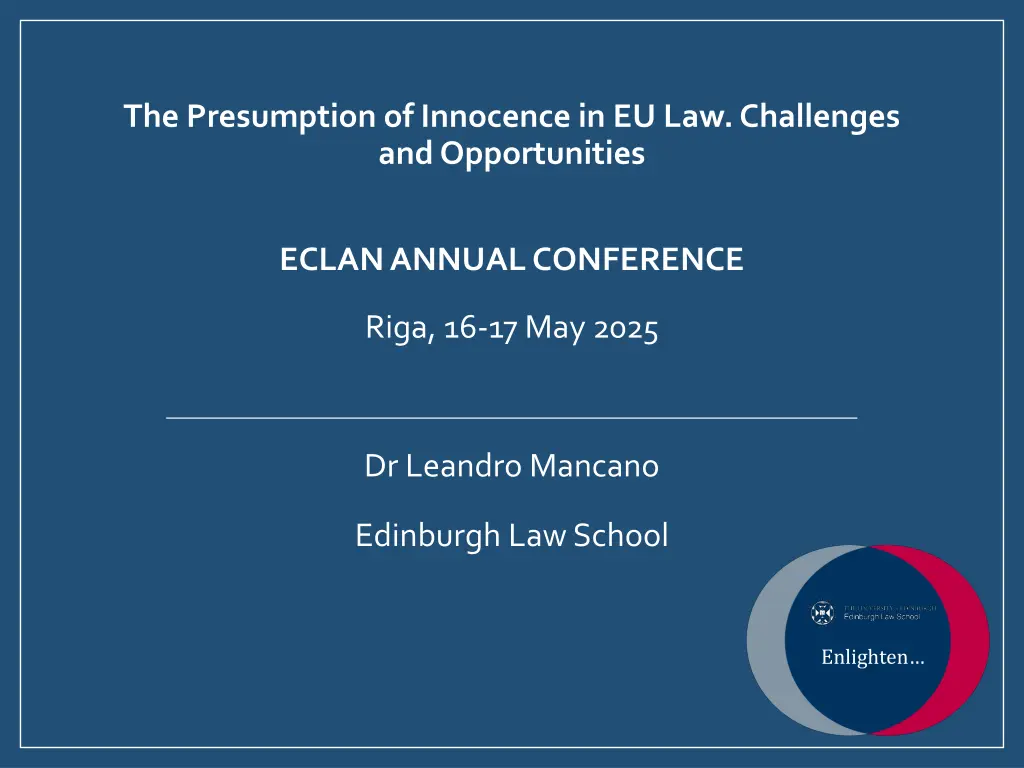
Challenges and Opportunities of the Presumption of Innocence in EU Law
Explore the foundational aspects of the presumption of innocence in EU law, its constitutional dimensions, and the interconnected principles that safeguard fair trials and human rights. Delve into the implications for Member States and the evolving legal landscape in the quest for effective legal protection.
Uploaded on | 1 Views
Download Presentation

Please find below an Image/Link to download the presentation.
The content on the website is provided AS IS for your information and personal use only. It may not be sold, licensed, or shared on other websites without obtaining consent from the author. If you encounter any issues during the download, it is possible that the publisher has removed the file from their server.
You are allowed to download the files provided on this website for personal or commercial use, subject to the condition that they are used lawfully. All files are the property of their respective owners.
The content on the website is provided AS IS for your information and personal use only. It may not be sold, licensed, or shared on other websites without obtaining consent from the author.
E N D
Presentation Transcript
The Presumption of Innocence in EU Law. Challenges and Opportunities ECLAN ANNUAL CONFERENCE Riga, 16-17 May 2025 Dr Leandro Mancano Edinburgh Law School Enlighten
Three Dimensions Constitutional/Systemic Criminal law specific Cross-cutting Working assumption: presumption of innocence as axiomatic and elementary cornerstone of the right to a fair trial. It relates to both the procedural burden and standard of proof. Inextricably linked to other defence rights: right to be heard; right to information; right to remain silent (no conviction based on it); right not to self-incriminate oneself.
The Constitutional Dimension The essential characteristics of EU law [ ] have given rise to a structured network of principles, rules and mutually interdependent legal relations linking the EU and its Member States, and its Member States with each other [ ] This legal structure is based on the fundamental premiss that each Member State shares with all the other Member States, and recognises that they share with it, a set of common values on which the EU is founded, as stated in Article2 TEU (Opinion 2/13). Values Objectives Principles
The Constitutional Dimension Article 2 TEU (rule of law, respect for human rights, justice) Article 48(1) Charter and PoI Directive Articles 3(2) TEU and 67 TFEU (creation of an area of freedom, security and justice based on respect for human rights and national systems) There is more than meets the eye Article 19(1) TEU and rule of law backsliding Member States shall provide remedies sufficient to ensure effective legal protection in the fields covered by Union law
The Constitutional Dimension Articles 2 and Article 19(1) TEU A specialised section of the Public Prosecutor s Office with exclusive competence to conduct investigations into offences committed by judges and prosecutors, where the creation of such a section is not justified by objective and verifiable requirements relating to the sound administration of justice, and is not accompanied by specific guarantees such as to ensure that that competence may be in full compliance with Articles 47 and 48 of the Charter (Joined Cases C-83/19, C-127/19, C-195/19, C-291/19, C-355/19 and C-397/19, Asocia ia Forumul Judec torilor din Rom nia ).
Criminal Law Dimension. The Full Force of Minimum Rules The PoI Directive establishes common minimum rules. A number of situations related to pre-trial detention fall outwith the scope of the Directive and therefore of the Charter of Fundamental Rights: -the allocation of the standard of proof in the context of decisions on pre-trial detention; -the degree of certainty that the national court must have concerning the perpetrator of the offence; -the rules governing examination of various forms of evidence (eg a judge can decide without comparing the incriminating and exculpatory evidence); -the extent of the statement of reasons that a national court is required to provide in response to arguments made before. (See inter alia Case C-310/18 PPU Milev, paras 48 49; Case C- 653/19 PPU, DK, paras 30 and 41).
Criminal Law Dimension. Relation with Other Rights Provision of information about the right to remain silent after making self- incriminating statement to police officers. Assessing overall fairness of the trial (also looking at whether the statements formed an integral or significant part of the probative evidence, and the strength of the other evidence in the case). EU lawdoes not preclude national legislation which prohibits the trial court from raising of its own motion, with a view to the annulment of the procedure, a breach of the obligation to inform persons promptly of their right to remain silent, where those persons have not been deprived of a practical and effective opportunity to have access to a lawyer, if necessary having obtained legal aid, and where they have had a right of access to their file and the right to invoke that breach within a reasonable period of time (Case C-660/21, K.B., F.S.).
Cross-cutting Dimension. The Right to Remain Silent The importance of less obvious policy areas of EU law - Article 83(2) TFEU - If the approximation of criminal laws and regulations of the Member States proves essential to ensure the effective implementation of a Union policy in an area which has been subject to harmonisation measures, directives may establish minimum rules with regard to the definition of criminal offences and sanctions in the area concerned; - Several important principles of this field have developed outwith EU criminal law strictly understood and in other policy areas and especially the internal market (e.g. the retroactivity of more lenient penalties as defined in the Berlusconi judgment and subsequently incorporated into the Charter).
Cross-cutting dimension. The Right to Remain Silent National law (transposing EU law) penalising lack of cooperation from natural persons in punitive administration proceedings for insider dealing conducted by Consob (the Italian Financial Market Supervisory Authority) (Case C-481/19, DB v. Consob). The importance of the right to remain silent = to protect against improper coercion by the authorities, avoid miscarriages of justice and secure the aims of Art. 6 ECHR, (paras 38-39). The right [to silence] is intended to apply in the context of proceedings which may lead to the imposition of administrative sanctions of a criminal nature (para 42). The person would still have the right to silence in the proceedings before Consob, where there is the risk that the evidence obtained during those proceedings may be used in parallel conducted criminal proceedings against the same person (para 44). Legal persons may still be compelled to provide elements in the context of competition law.

